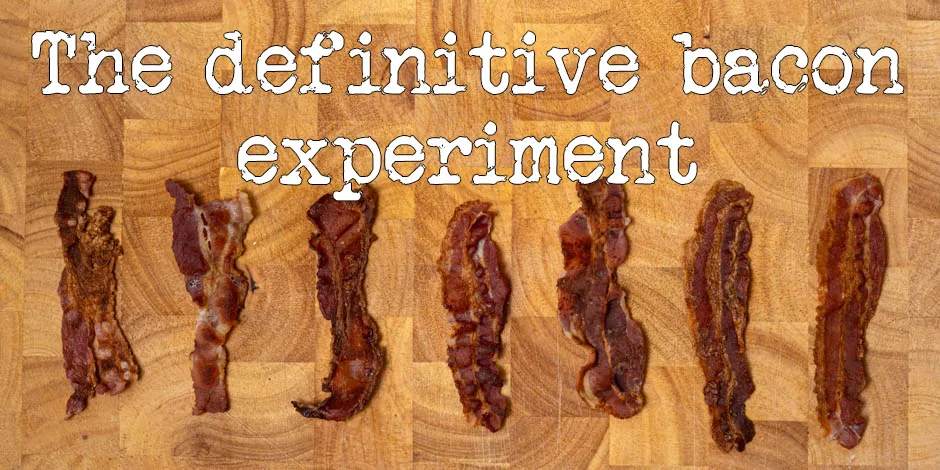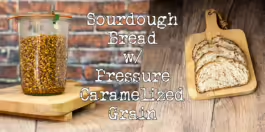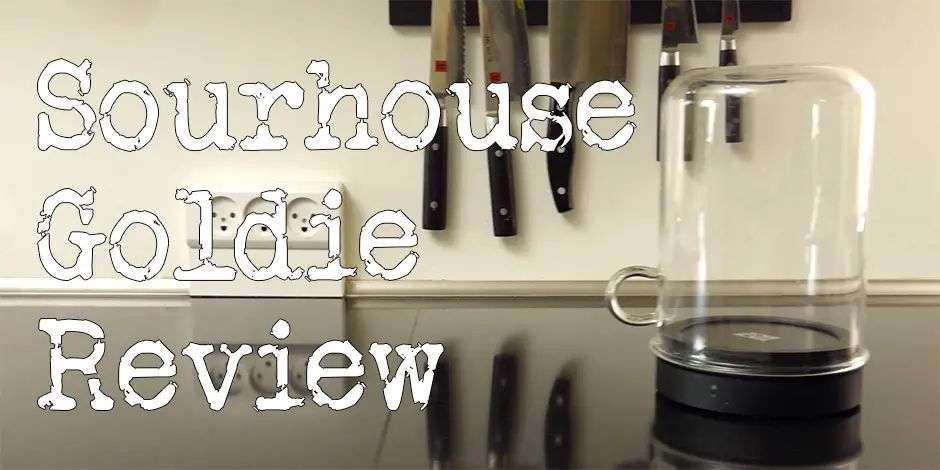In the world of culinary treasures, bacon stands out with a fervent following. This experiment delves into bacon’s rich history, its unique chemical allure, and its unparalleled cultural significance. Exploring varied preparation methods, by its conclusion, readers will discover the optimal way to cook bacon, maximizing its enduring appeal. You will know the best way to cook bacon.
What makes me an expert on bacon? Well, I’ve eaten and cooked a lot of bacon. I’ve tried all the methods many times, and I had my own favorite before performing this experiment, but I had never done it side-by-side, so I decided that it was time to figure out what was the best way to cook bacon.
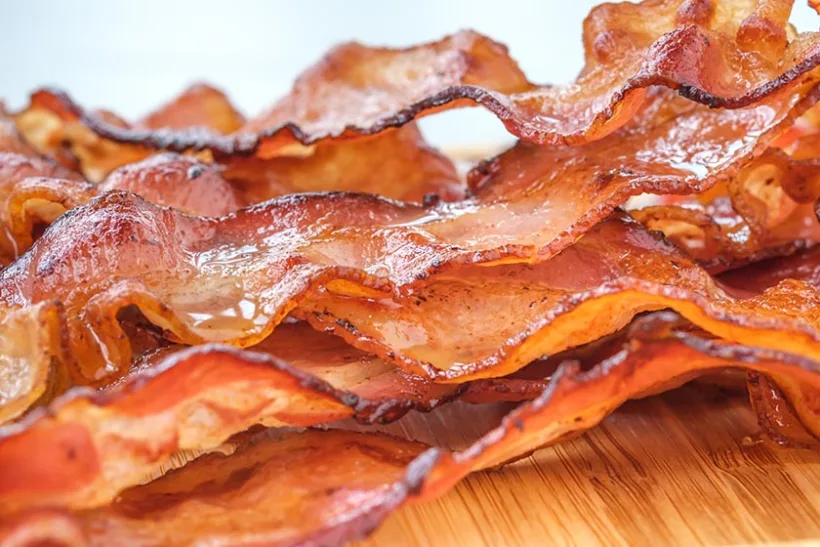
Why does bacon taste like bacon?
Bacon’s reputation for being irresistibly tasty is rooted in various factors, including its texture, chemistry, cooking method, and even cultural associations. Exploring each of these facets offers an understanding of why many individuals around the world crave this particular food.
Texture and Fat Content
One of the main reasons bacon is so delectable is its fat content. Fat is a key carrier of flavor, and bacon’s particular composition of meat to fat gives it a unique mouthfeel. The juxtaposition of crispy, crunchy edges with soft, chewy fat makes for a textural experience that few other foods can match. Each bite delivers a satisfying crunch, followed by a melt-in-your-mouth sensation, triggering sensory pleasure points that enhance the overall eating experience.
Maillard Reaction and Caramelization
The process of cooking bacon is vital to its taste. When bacon is fried or baked, it undergoes what’s known as the Maillard reaction—a chemical reaction between amino acids and reducing sugars that gives browned food its distinctive flavor. Concurrently, the sugars in the bacon can also caramelize, producing a sweet undertone. Combined, these processes produce a complex flavor profile that’s both savory and slightly sweet, making it appealing to a wide range of palates.
Salt and Umami
Bacon is cured, often with salt, which not only serves as a preservative but also amplifies the meat’s flavor. Salt is a universal flavor enhancer, exciting our taste buds and increasing the salivation that aids in taste perception. Additionally, bacon possesses umami, often described as the fifth basic taste after sweet, sour, bitter, and salty. Umami, which is derived from the presence of glutamates, imparts a savory, meaty flavor that many people find deeply satisfying.
Smokines
Many varieties of bacon are smoked during the curing process. This imparts a smoky aroma and taste to the meat, which adds another layer of complexity to its flavor profile. Smoked foods often have an innate allure, possibly because, evolutionarily, smoked foods indicated a cooked, thus safer, and more digestible food source.
Cultural and Psychological Factors
Beyond the pure chemistry of its taste, bacon also holds a place of cultural significance, especially in certain Western societies. It’s often associated with comfort foods, hearty breakfasts, and special occasions. Moreover, the aroma of cooking bacon is powerful and can evoke memories and emotions. As with many beloved foods, the experience of eating bacon is not just about its physical taste but also the psychological associations we have with it. The mere anticipation of eating bacon can prime our taste buds to find it even more delicious.
In sum, the allure of bacon is a harmonious blend of its physical attributes and the chemical reactions that occur when it’s cooked, alongside the cultural and psychological significance we attach to it. It’s a testament to how both science and culture shape our culinary preferences.
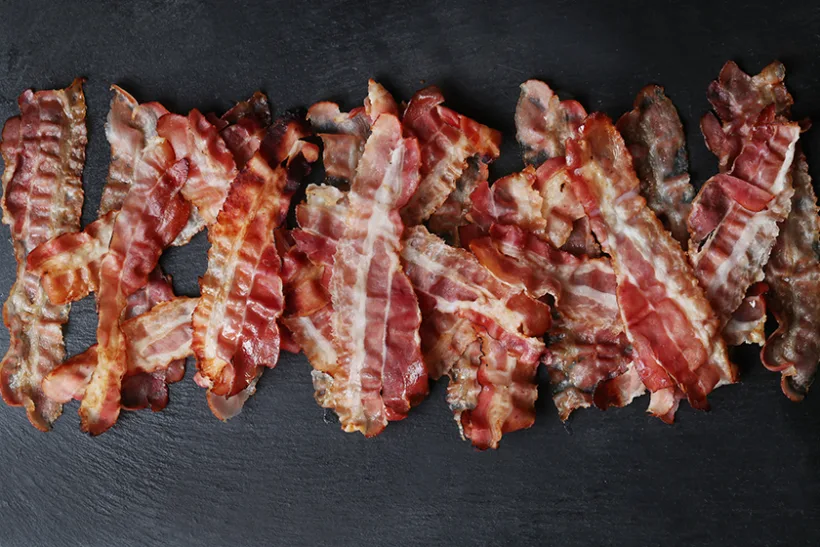
What kind of bacon should I buy?
High-quality bacon offers a culinary experience that is undeniably superior to its lesser counterparts. When you choose the finest bacon, you’re indulging in a product with a richer, more nuanced taste. This depth of flavor, characterized by an exceptional blend of smokiness, sweetness, and savory notes, is often derived from ethically raised pigs fed a natural diet.
Beyond the palatable delights, the differences also extend to the nutritional realm. The best quality bacon often contains fewer preservatives, additives, and artificial ingredients. Pigs raised without antibiotics or hormones result in a cleaner and healthier product, with a better balance of omega fatty acids, especially when pasture-raised.
The environmental factor
Equally compelling are the ethical and environmental reasons associated with selecting top-tier bacon. The current era emphasizes the importance of sustainable choices and ethical consumerism. By opting for premium bacon, you’re likely supporting farms dedicated to humane and sustainable farming practices. Such farms prioritize the animals’ well-being, ensuring they are reared in comfortable conditions, treated with care, and provided with a natural diet. This conscientious approach to farming doesn’t only reflect respect for animal welfare but also resonates with a broader commitment to our environment.
Sustainable farming gives you better bacon
Sustainable farming promotes balanced ecosystems and minimizes the ecological impact, contrasting with large-scale industrial farming. In essence, investing in high-quality bacon becomes an interconnected choice, bearing implications for taste, health, ethics, and the environment.
All of that being said, buy the best quality you can afford. Buying from a local farm or a Mom-and-Pop butcher will give you better quality than the industrial variety, but that doesn’t matter much if you can’t afford it.
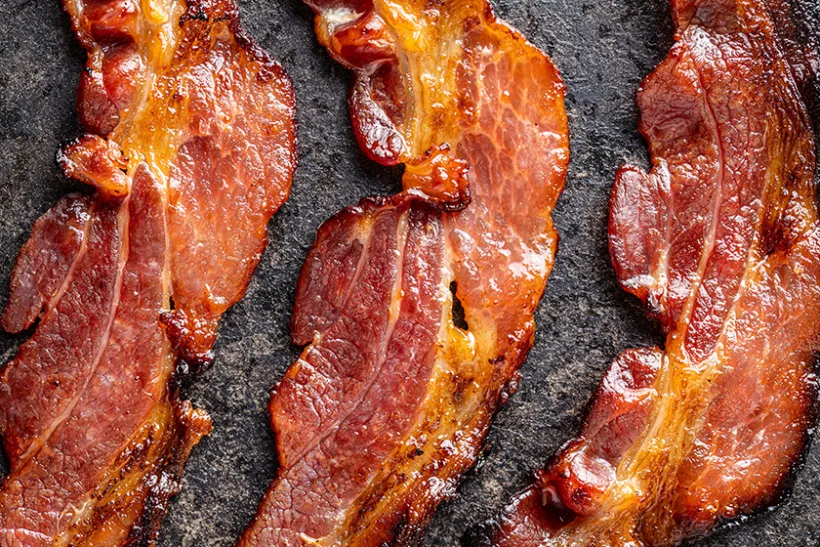
How did I experiment to find the best way to cook bacon?
I tried out six different ways to prepare bacon. In the microwave, three different skillet methods and two oven methods.
I will test each cooking method using both thin (or regular cut) and thick slices of bacon.
Let’s see what is the best way to cook bacon.
Bacon cooked in the microwave
Total time: 4m 30s (thin), 5m (thick)
Method
I put a piece of kitchen paper on a plate. Then, I added the bacon and topped it off with another piece of kitchen paper.
I put it in my 900W microwave and cooked the bacon for four minutes for the thin and four and a half minutes for the thick bacon.
Results
The thin slices were overdone, although I checked it underway. It might be possible to dial it in, but it will be hard as the number you find for your microwave is probably not always the same.
The thick slices seemed to be both underdone and overdone simultaneously.
The cleaning was a breeze. Just discard the kitchen paper and clean off the plate.
Bottom Line
Don’t do it! It might be fast, but it’s a fast way to ruin your bacon.
Thin strips
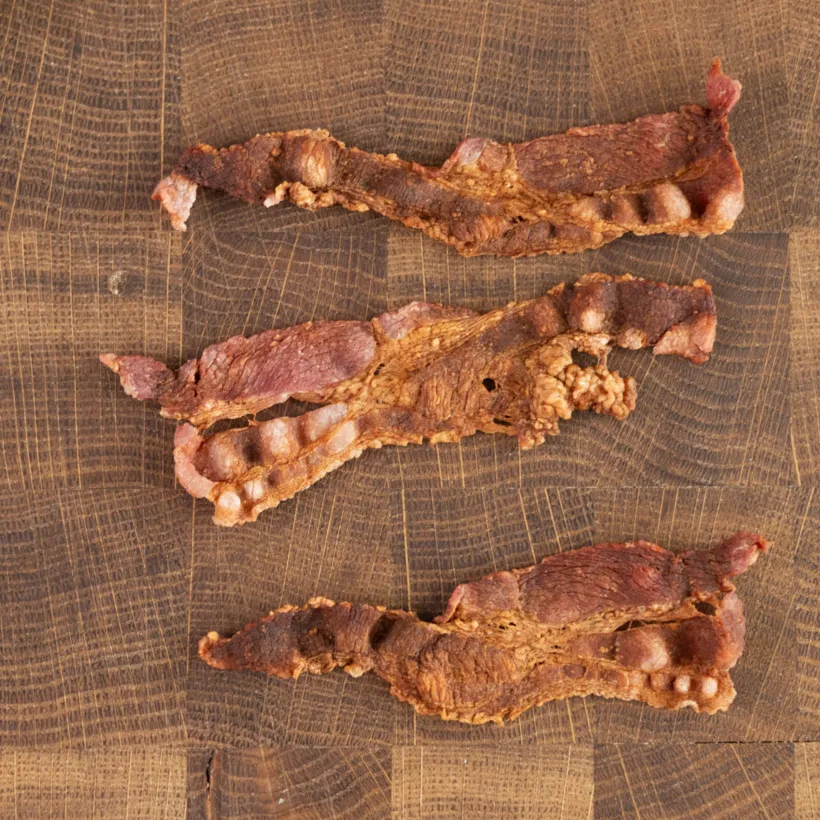
Thick strips
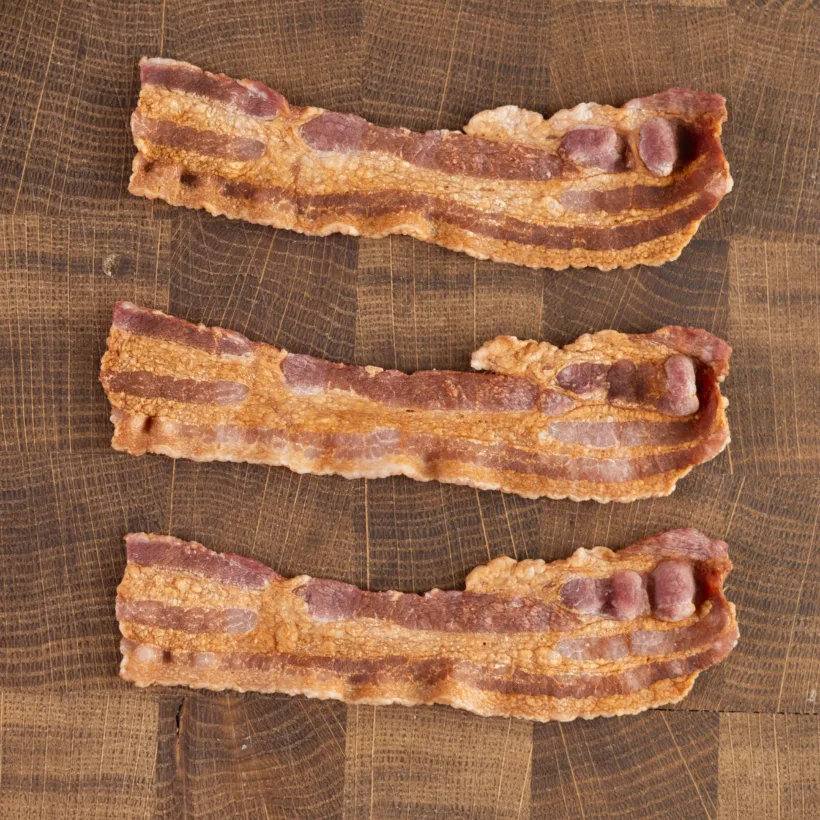
Bacon cooked with water in the skillet
Total time: 15m 30s (thin), 16m (thick)
Method
America’s Test Kitchen pioneers this method. The idea is that the water on top of the bacon is kept down while the fat is rendered.
I add slices of bacon to the skillet. Pour just enough water for the slices to be covered on top.
Then, I turned the burner to high until the water had evaporated. Then I turned it to medium.
Afterward, it seemed like all of the fat had either disappeared or hadn’t been rendered because the pan seemed super dry and it didn’t change during the rest of the cooking.
The cleanup was a mess. The pan had lots of fond (that wouldn’t be used), and it splattered a lot during cooking.
Results
Both the thin and the thick cuts of bacon were not crispy enough to my taste.
Bottom Line
Messy and the bacon doesn’t get crispy. If you like a well-cooked bacon with no crispiness, this might be the way to go. Super messy.
Thin strips
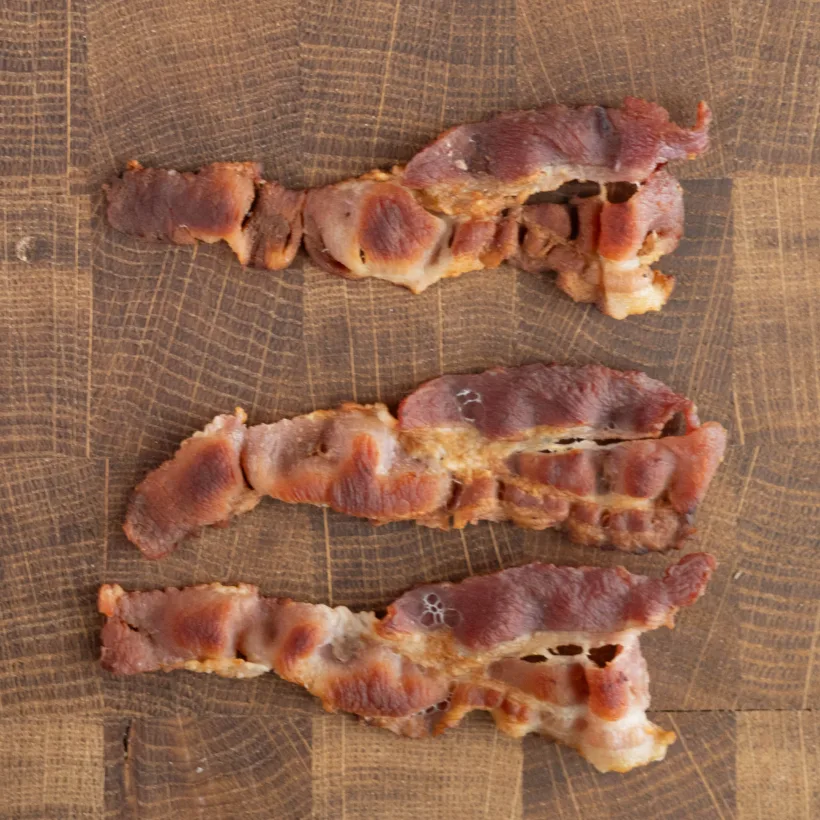
Thick strips
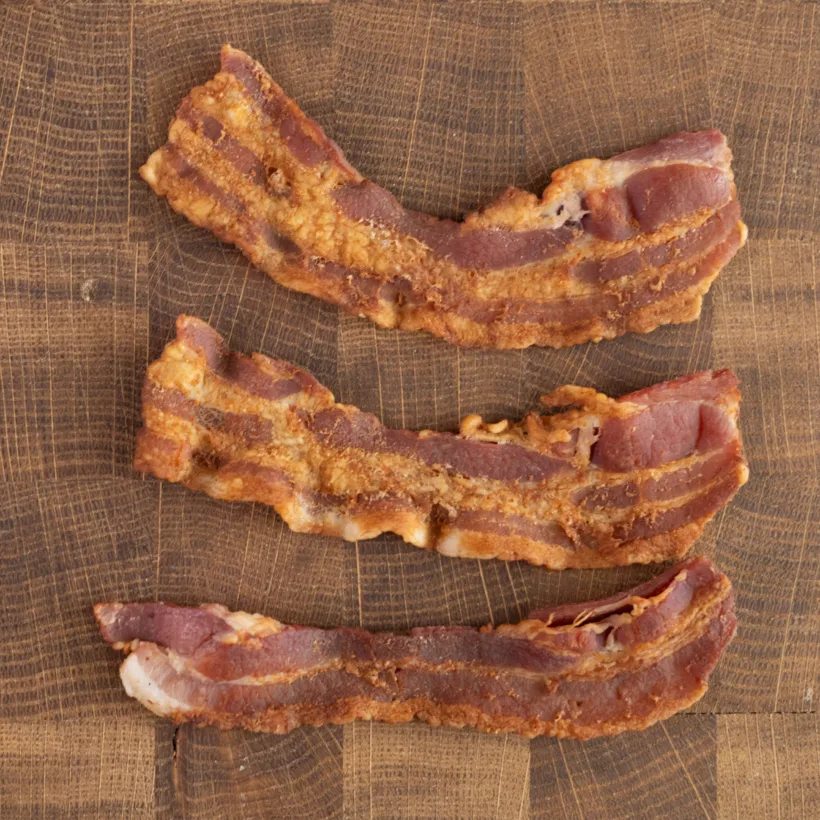
Oven-baked bacon on a rack
Total time: 29m (thin), 33m (thick), both including 5 minutes of heating
Method
I heated the oven to 200°C/400°F for 5 minutes.
I added kitchen paper to the pan. Added a rack on top and put the slices of bacon onto the rack.
I then cooked the bacon to my liking. The thick strips took quite a bit longer.
Results
I ended up with inconsistent textures. The thin strips were too crispy, and the thick strips were too chewy.
Bottom Line
The results were not good for either type of bacon. It’s not the best way to cook bacon. Clean-up was a breeze.
Thin strips
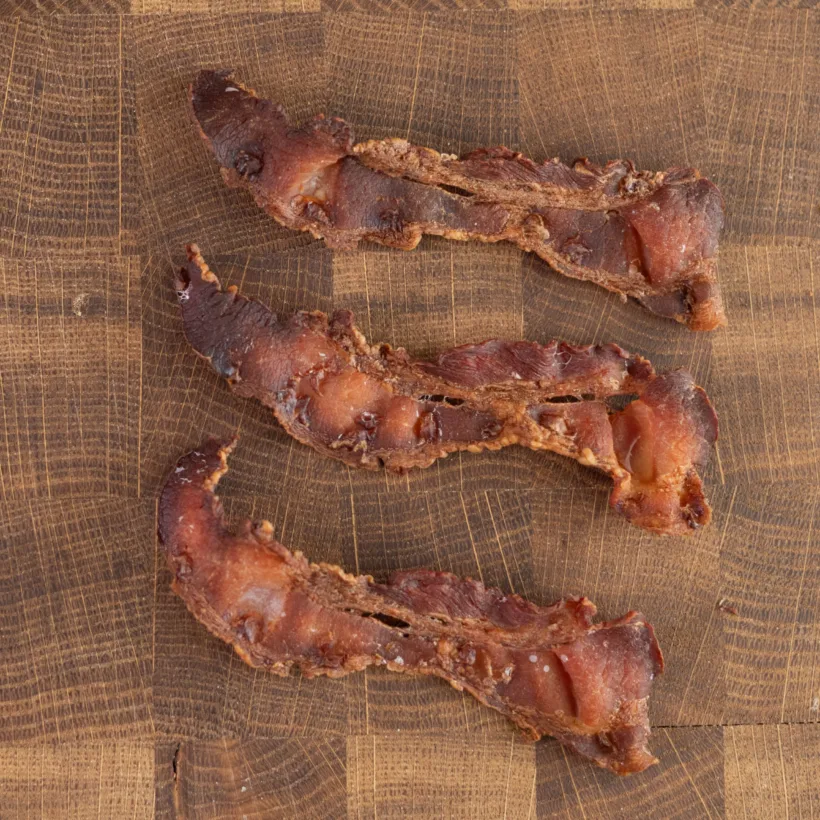
Thick strips
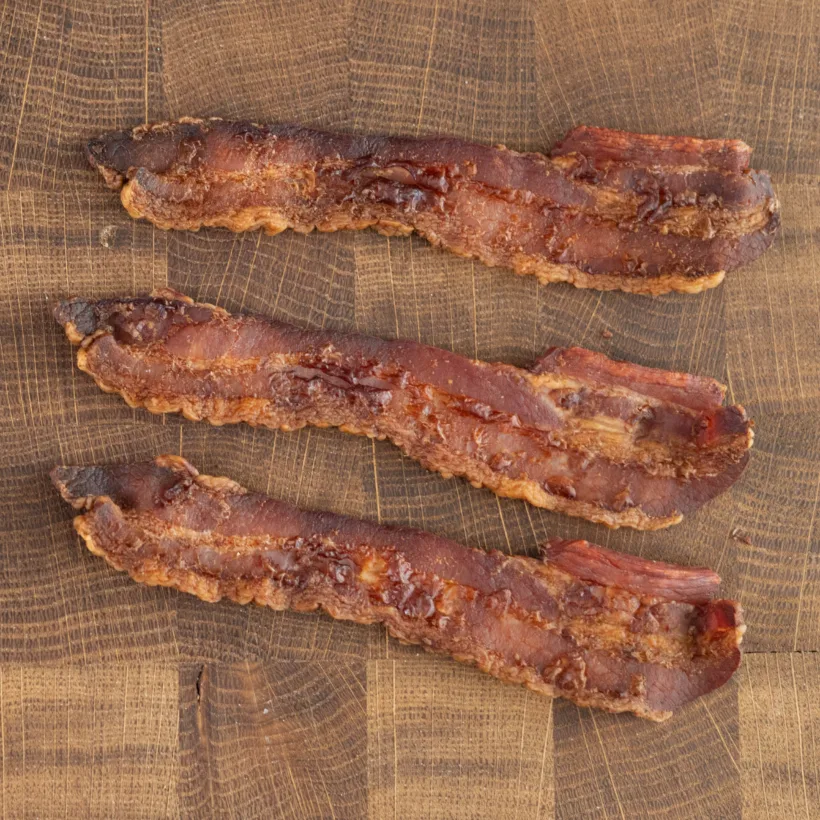
Bacon cooked in a non-stick skillet
Total time: 14m (thin), 13m (thick)
Method
I added the bacon into a cold skillet. Turned the heat to medium and cooked the bacon on both sides until done.
Because of the non-stick properties of the skillet the fat that was rendered just slipped away. I guess if I had filled the bacon, this might have worked better.
Results
I tried my best to get them to have even browning, but because the fat was not near the meat, they got very dark in spots, so at some point I just took it off the pan to avoid burning.
Bottom Line
Both the thin and thick-cut bacon was too chewy for my taste. Clean-up was super easy.
Thin strips
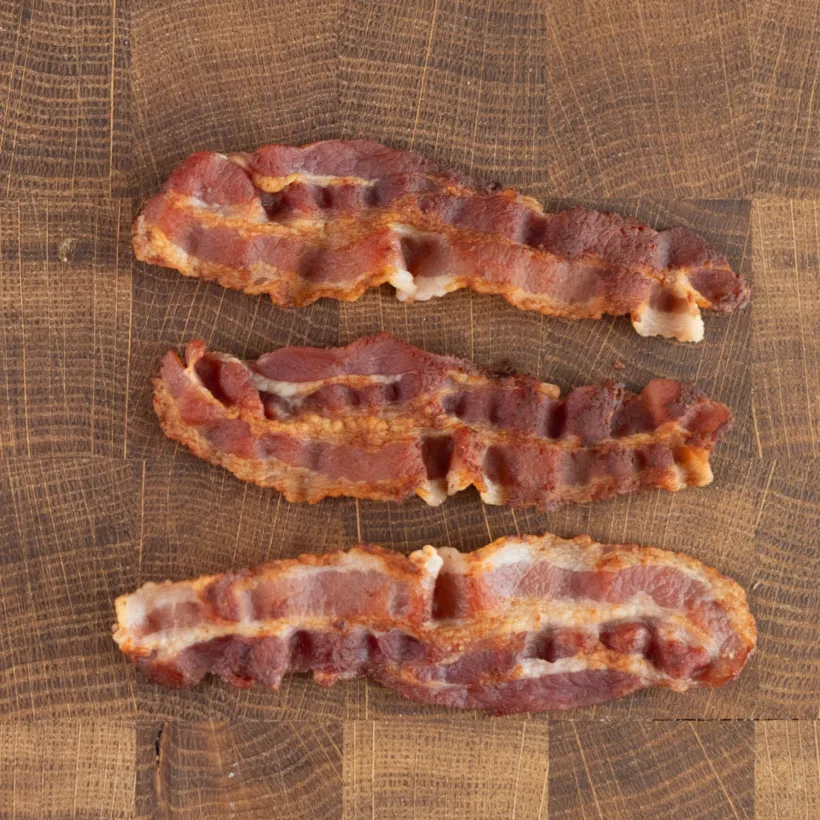
Thick strips
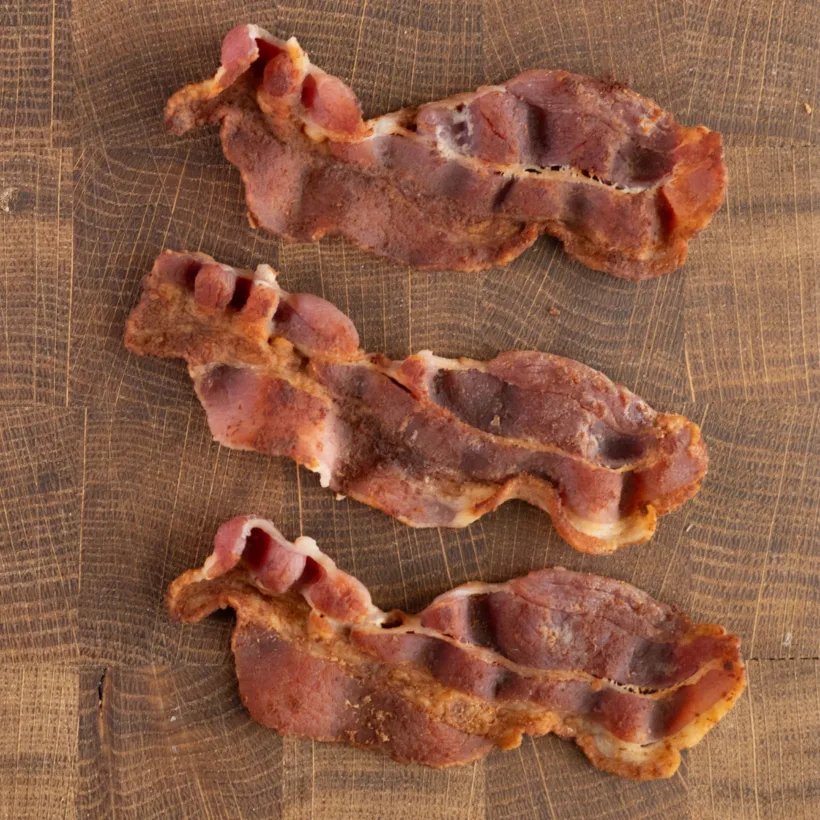
Oven-baked bacon on parchment paper
Total time: 23m (thin), 28m (thick), both including 5 minutes of heating
Method
Like the previous oven method, I heated the oven to 200°C/400°F for 5 minutes.
I added a sheet of parchment paper to the pan and put the slices on top.
The cooking of the thin slices took around 18 minutes and about 23 minutes for the thick slices.
Results
The thin-cut bacon could have used a bit more crispiness, but the thick-cut bacon was close to perfection.
Clean-up was very easy. Just discarded the parchment and cleaned the pan with a bit of soap and water.
Bottom Line
This is a really good method, definitely a contender for the best way to cook bacon. Great results and easy cleaning.
Thick strips
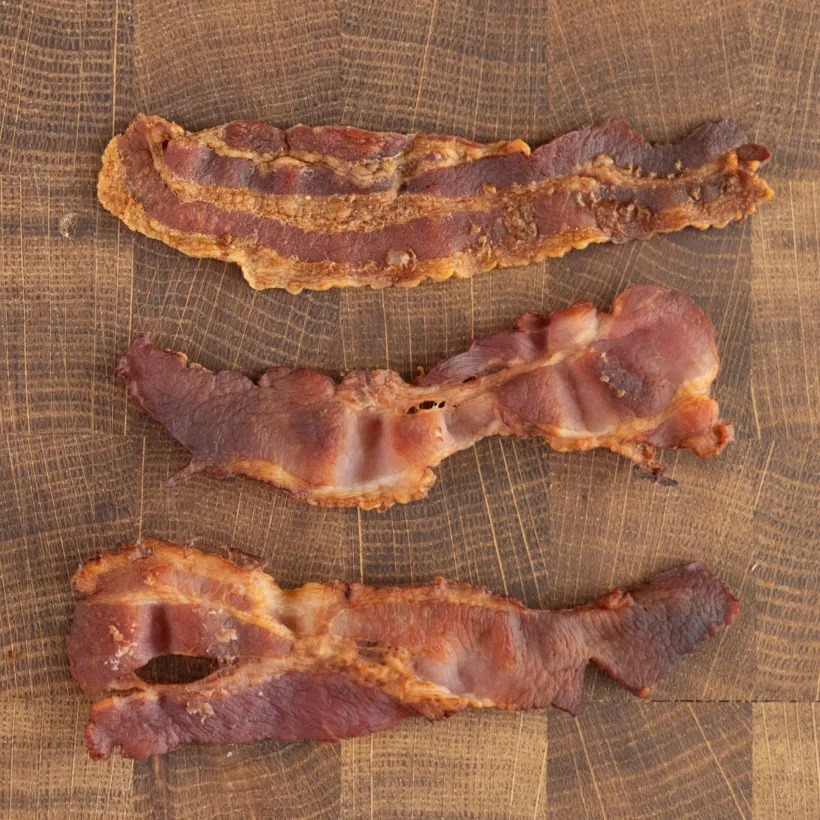
Thick strips
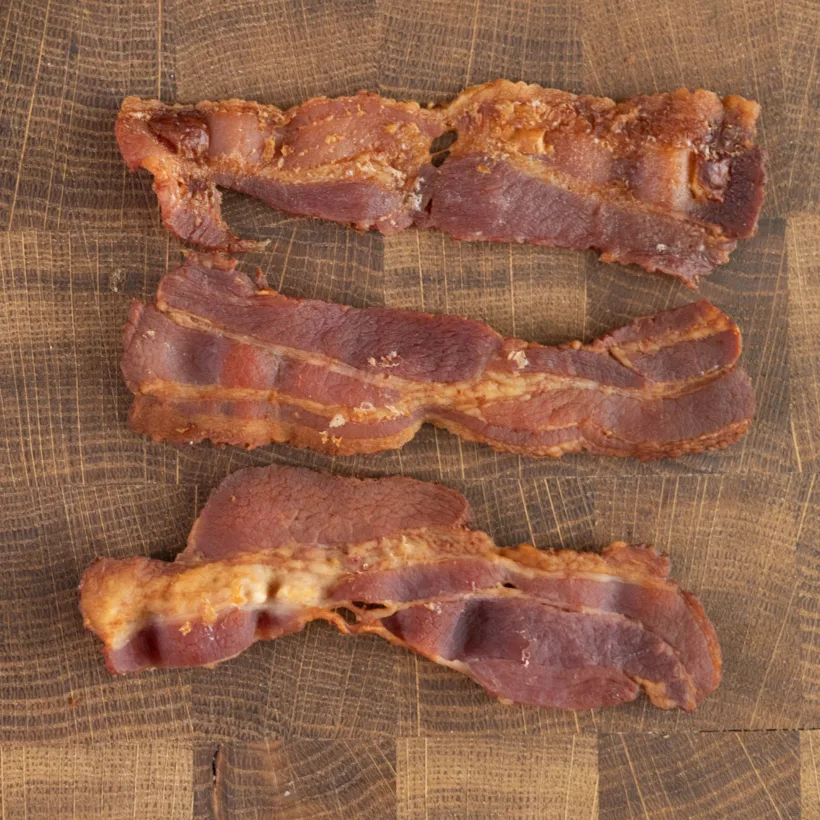
Bacon cooked in a cast iron skillet
Total time: 7m (thin), 7m (thick)
Method
Like the non-stick skillet method, I added the bacon to the cold skillet. I turned it on to medium heat and cooked on both sides until the bacon was done.
The rendering of the fat worked really well here, but a lot of splatter was going on, and it was quite messy.
Results
Both of the slices were perfect. Just the right amount of crispiness and chewiness for the ultimate bacon experience.
Bottom Line
For fast cooking, but not a huge amount, this is the way to go. I’d say that using a cast-iron skillet is the fastest way to get perfectly cooked bacon.
Thick strips

Thick strips
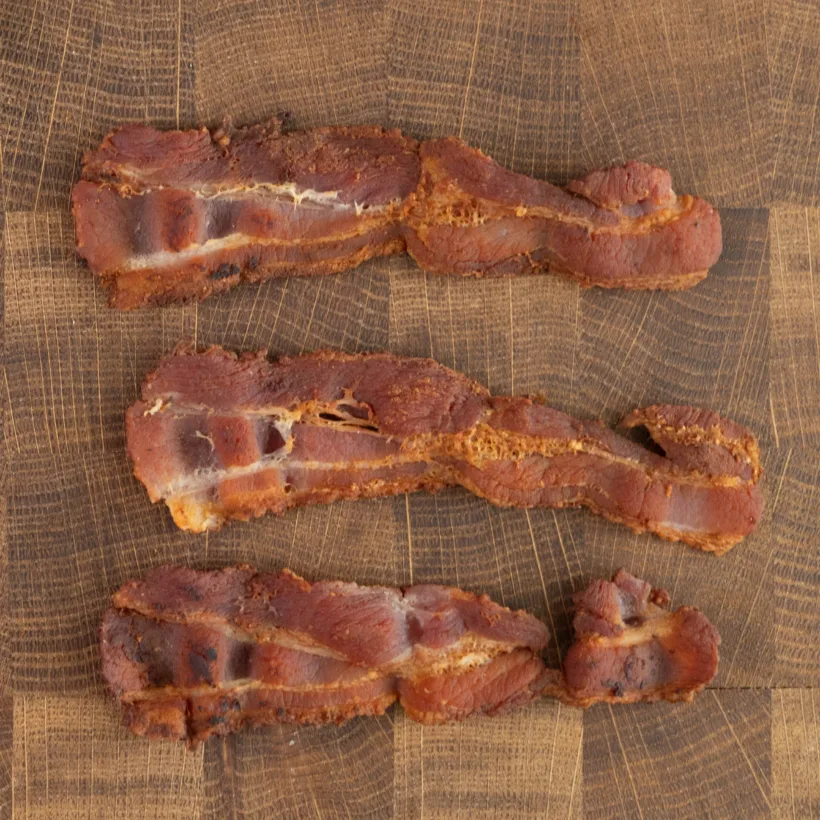
What is the best way to cook bacon?
It seems like the methods that soak up the fat (microwave, oven with kitchen paper) or don’t render the fat well enough (non-stick skillet, water in the skillet) make it so that there’s not enough fat to cause enough of the Maillard reaction to happen. The other two, cast iron skillet and baked on parchment paper have the bacon cooking in its own fat, which gives the perfect texture.
I think both methods have merit. Cooking in a cast iron skillet is very quick. It’s the only method that is faster than cooking in the microwave. That leaves you with a mess of splatter and a dirty pan to clean afterward, though, plus you are limited to the number of slices of bacon your pan will fit. Maybe five or six slices in a 10″ (26 cm) pan.
Opposite, the oven baking method is very clean and simple to clean up. Also, you make a lot more bacon. My pan will easily fit 12 slices of bacon.
Please share the best way to cook bacon on social media
This is my definitive bacon experiment. If you like the article, please share it with people who want to know the best way to cook bacon on social media.
If you make it and post it on Instagram, please tag me as @foodgeek.dk so I can see it. That would make me very happy.



